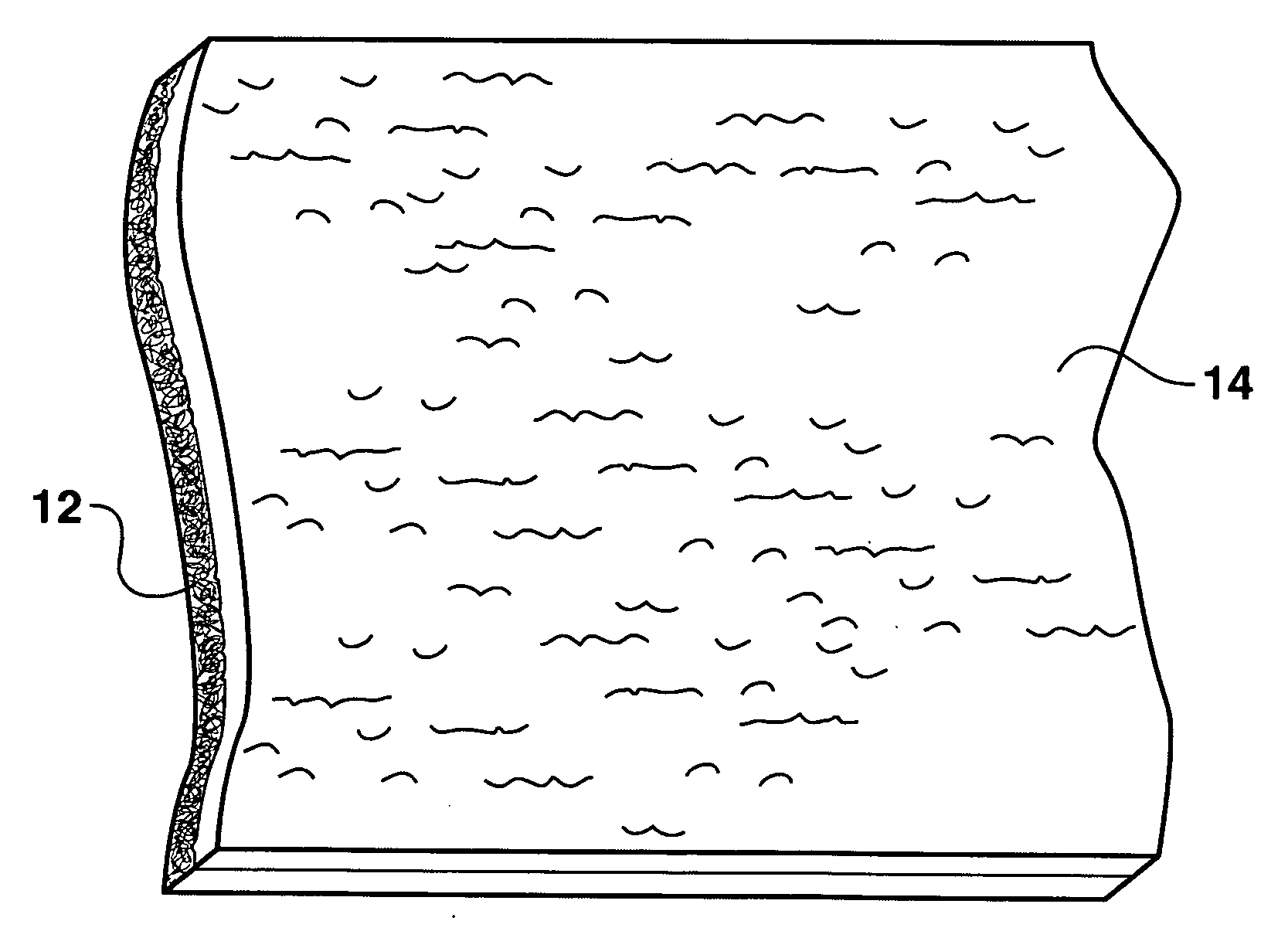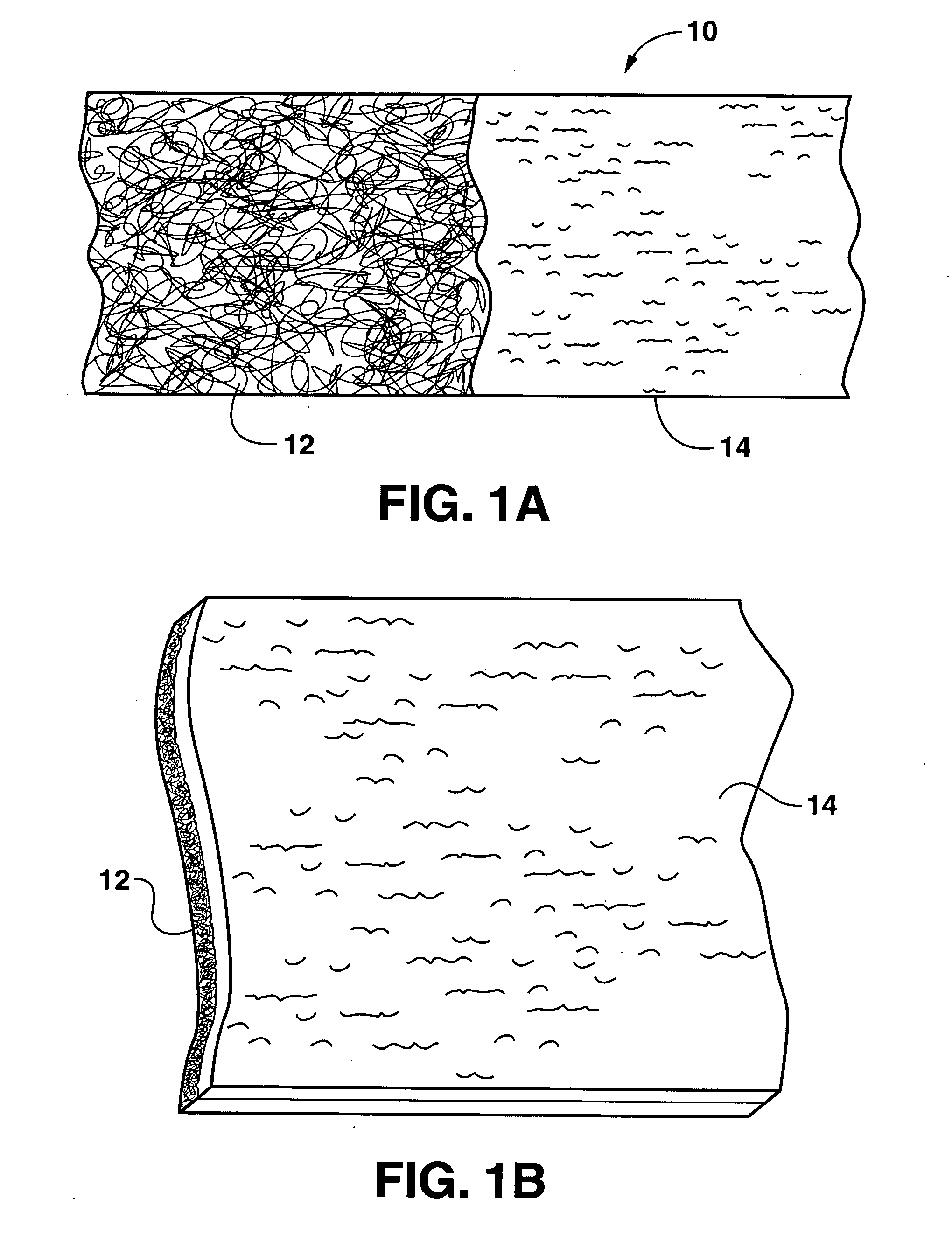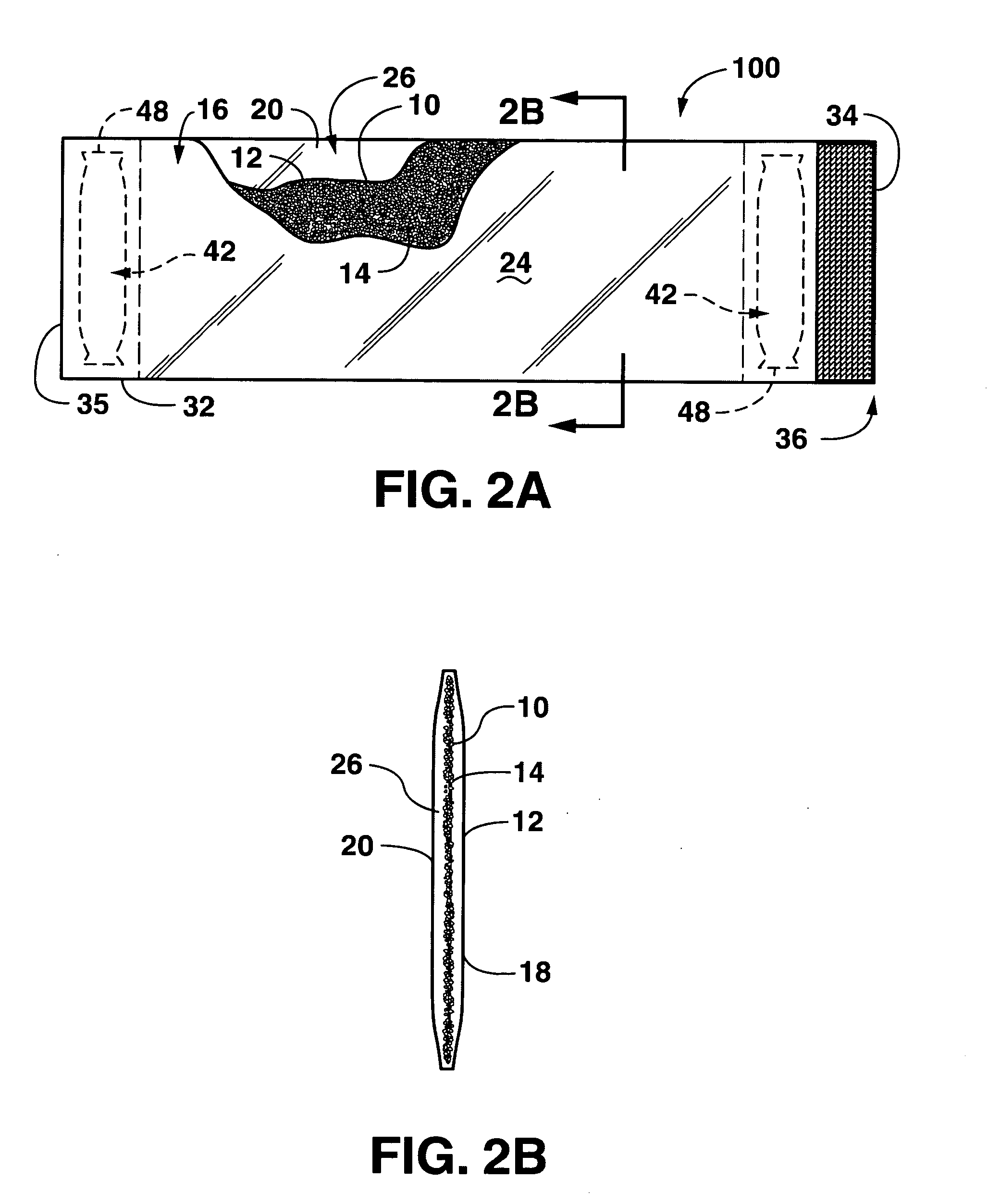Self-activated cooling device
a self-activated cooling and cooling device technology, applied in the field of self-activated cooling devices, can solve the problems of reducing the desired effect of any device incorporating the composition, affecting the cooling effect, so as to achieve less rapid but prolonged cooling profile, rapid but sustained cooling profile, and short duration cooling profile
- Summary
- Abstract
- Description
- Claims
- Application Information
AI Technical Summary
Benefits of technology
Problems solved by technology
Method used
Image
Examples
example 1
[0083]The ability to form a water activated cooling substrate was demonstrated. Initially, a bonded carded web fabric was cut into pieces that measured 7 inches in the cross machine direction and 12 inches in the machine direction. The bonded carded web fabric had a basis weight of 50 grams per square meter (50 gsm) and was made with a blend of 60% 1.5 denier FiberVisions ESC 215 bicomponent (PE sheath / PP core) fiber with 0.55% HR6 finish and 40% 6.0 denier Invista T-295 polyester fiber with 0.50% L1 finish.
[0084]An aqueous coating formulation was prepared as follows. In a 400 milliliter PYREX® beaker, 1.50 grams of xanthan gum (Verxan D from Cargill) was added to 298.5 grams of distilled water. The mixture was stirred for 1.5 hours and then left overnight. The following morning, the mixture was observed to be higher in viscosity. It was stirred for an additional 10 minutes and then the viscosity was measured at 1032 centipoise using a Brookfield DV-1 viscometer with an LV-4 spindle...
example 2
[0088]The ability to form a water activated cooling substrate was demonstrated. Initially, a dual layer bonded carded web was cut into pieces that measured 7 inches in the cross machine direction and 8 inches in the machine direction. One side of the web contained 17 gsm of a 100% 1.5 denier FiberVisions ESC 215 bicomponent (PE sheath / PP core) fiber with 0.55% HR6 finish. The other side of the web contained 58 gsm of a blend of 40% 6.0 denier Invista T-295 polyester fiber with 0.50% L1 finish and 60% of a 28 denier FiberVisions ESC 236 bicomponent (PE sheath / PP core) fiber with 0.55% HR6 finish. Therefore, the total basis weight of the dual layer bonded carded web was 75 gsm.
[0089]An aqueous coating formulation was prepared as follows. In a 600 milliliter PYREX® beaker, 5.0 grams of xanthan gum (Verxan D from Cargill) was added to 295.0 grams of distilled water. The mixture was stirred for about 6 hours and then the viscosity was measured at about 4500 centipoise using a Brookfield ...
example 3
[0092]The ability to form a water activated cooling substrate was demonstrated. Initially, a dual layer bonded carded web was cut into pieces that measured 7 inches in the cross machine direction and 8 inches in the machine direction. One side of the web contained 17 gsm of a 100% 3.0 denier FiberVisions ESC 233 bicomponent (PE sheath / PP core) fiber with 0.55% HR6 finish. The other side of the web contained 100 gsm of a blend of 50% 15 denier Invista T-295 polyester fiber with 0.50% L1 finish and 50% of a 6.0 denier FiberVisions ESC 236 bicomponent (PE sheath / PP core) fiber with 0.55% HR6 finish. Therefore, the total basis weight of the dual layer bonded carded web was 117 gsm.
[0093]An aqueous coating formulation was prepared as follows. In a 400 milliliter PYREX® beaker, 366.9 grams of the urea+xanthan gum / distilled water formulation described in Table 3 of Example 2 was mixed with 29.3 grams of Michem® Lube 723 (a nonionic paraffin wax emulsion with 30% solids, available from Mich...
PUM
 Login to View More
Login to View More Abstract
Description
Claims
Application Information
 Login to View More
Login to View More - R&D
- Intellectual Property
- Life Sciences
- Materials
- Tech Scout
- Unparalleled Data Quality
- Higher Quality Content
- 60% Fewer Hallucinations
Browse by: Latest US Patents, China's latest patents, Technical Efficacy Thesaurus, Application Domain, Technology Topic, Popular Technical Reports.
© 2025 PatSnap. All rights reserved.Legal|Privacy policy|Modern Slavery Act Transparency Statement|Sitemap|About US| Contact US: help@patsnap.com



